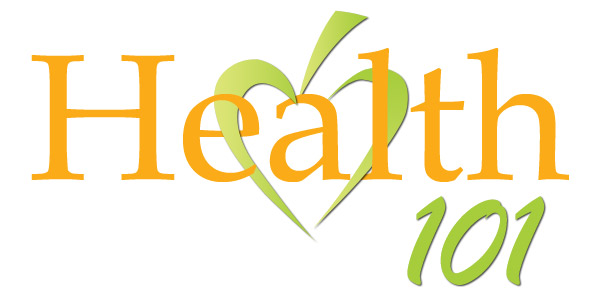It seems everyone that comes into our clinic has a common complaint, “I’m tired”. Of course there are quick fixes that can give temporary relief through drug therapy, which carries its own set of concerns. Bio-identical hormone replacement is an extremely effective method in dealing with fatigue. While hormone replacement is a much safer and less toxic approach than drugs, it still does not address the entire problem underlying fatigue.
We should understand that one of the primary functions of the body is to produce energy from the food we eat. When biochemical energy production declines for any reason, the resulting symptom is fatigue. Causes for fatigue are result of imbalanced oxidation rates, incomplete energy pathways, heavy metal toxicity, glandular imbalances, and sugar and carbohydrate intolerance.
Although fatigue is not considered a disease, there are still signs that may indicate a not so obvious fatigue problem such as:
- Addiction to stimulants
- Allergies
- Constipation
- Cravings for sweets or salt
- Difficulty concentrating
- Distaste for animal protein and fat
- Excessive sensitivity to stress
- Feelings of apathy and mental depression
- Inability to cope with stress
- Impaired thinking and memory loss
 Fatigue is the prime symptom of a deficiency of adequate biochemical energy production in the body cells. Reduced energy production can be due to a wide range of factors including lack of rest, infection, chronic diseases, muscular tension, emotional upset and very often nutritional imbalances or deficiencies. Let us consider the causes for this sometimes debilitating condition that so many of us deal with on a daily basis.
Fatigue is the prime symptom of a deficiency of adequate biochemical energy production in the body cells. Reduced energy production can be due to a wide range of factors including lack of rest, infection, chronic diseases, muscular tension, emotional upset and very often nutritional imbalances or deficiencies. Let us consider the causes for this sometimes debilitating condition that so many of us deal with on a daily basis.
- The oxidation rate is defined as the rate at which food is burned or oxidized. All biochemical oxidation has an optimum rate of reaction. When the rate is too fast or too slow, energy efficiency declines drastically.
- Glucose Intolerance and Fatigue. A steady supply of glucose at the cellular level is essential for optimum energy production. Many times fatigue is caused by some degree of sugar intolerance, or the inability to properly regulate cellular glucose levels. The result may be either high or low sugar levels in the blood. However, at the cellular level the effect is always a deficiency of available glucose, which can result in fatigue.
- Insulin Metabolism and Zinc. Insulin is a hormone which is necessary for the utilization of glucose in the body. Insulin allows glucose to pass across the cell membrane into the cells, where the glucose is burned or oxidized for energy. Zinc is required in the production and release of insulin into the blood. It also holds the hormone together allowing it to be active longer in the blood stream. When zinc levels are low, the effectiveness of insulin becomes limited causing a deficiency of glucose at the cellular level, again resulting in fatigue.
- Emotional Stress such as frustration, hostility, worry and fear deplete vital nutrients wearing down the adrenal glands ability to respond to stress.
- Minerals in the Energy Pathway. Minerals perform key roles in the energy pathway. They act as catalysts, activators and co-factors that enable the energy system to function. For example, magnesium is a catalyst for several hundred enzymes, including adenosine triphosphate or ATP. ATP is the molecule used as fuel for all cellular activity. Iodine is involved in the production of thyroid hormones. Potassium helps sensitize the tissues to thyroid hormones. Energy production in the Krebs cycle requires iron and copper. Manganese is needed in the mitochondria for energy production within all cells. Insulin production and release require zinc. Chromium is also involved in insulin metabolism. Hemoglobin, the oxygen-carrying molecule, requires iron and copper for its synthesis (Analytical Research Laboritories, Inc., 1993).
- Vitamins in the Energy Pathway. Many vitamins are involved directly or indirectly in the energy pathway. B vitamins are involved in many steps in the glycolysis and citric acid cycles. Vitamins A, C and E protect delicate enzymes from destruction by free radicals. Vitamin F, or the essential fatty acids, are needed to maintain cell membranes. Vitamin and mineral deficiencies are a common cause of energy loss and fatigue (Analytical Research Laboritories, Inc., 1993).
- Lifestyle. This is a category that can take on its own report so we’ll settle for touching on a few things. The big question is how much sleep are you getting each night? This is a downward spiral for those suffering from fatigue since it takes energy to sleep and adequate sleep is necessary to combat fatigue. More rest is essential in overcoming fatigue along with a nutritional approach.
- Developing healthful eating habits is another important lifestyle factor. A balance of protein, fats and cooked vegetables are necessary in promoting and maintaining good health.
Hormone and Nutrition Solutions specializes in providing a healthy approach to fatigue through nutritional balancing and bio-identical hormone replacement therapy. Visit our website at www.hormonenutritionsolutions.net or like us on Facebook.







 (Center for Science, 2014)
(Center for Science, 2014)




 When it comes to plaque buildup in the arteries there is a root cause, inflammation. Arteries are the high pressure side of the circulatory system in the body. When the possibility of a leak develops, the body begins its preventive maintenance program. To get a detailed account of the process follow the link provided in the cited work (Libby, 2006). To keep it simple, when inflammation shows up in the artery wall, the affected cells produce an adhesion (sticky) molecule that attracts monocytes. These are transformed into macrophages that trap lipids (LDL’s) creating a fatty layer over the inflamed area. The cholesterol in these trapped lipids are used to help repair any damaged cells causing the inflammation. If the inflammation continues the fatty layer is converted to the harder plaque which acts as a band aid. This process will continue until the inflammation is stopped or the artery is blocked. (Facing by-pass surgery is not a pleasant proposition, so feel free to email me for alternatives.)
When it comes to plaque buildup in the arteries there is a root cause, inflammation. Arteries are the high pressure side of the circulatory system in the body. When the possibility of a leak develops, the body begins its preventive maintenance program. To get a detailed account of the process follow the link provided in the cited work (Libby, 2006). To keep it simple, when inflammation shows up in the artery wall, the affected cells produce an adhesion (sticky) molecule that attracts monocytes. These are transformed into macrophages that trap lipids (LDL’s) creating a fatty layer over the inflamed area. The cholesterol in these trapped lipids are used to help repair any damaged cells causing the inflammation. If the inflammation continues the fatty layer is converted to the harder plaque which acts as a band aid. This process will continue until the inflammation is stopped or the artery is blocked. (Facing by-pass surgery is not a pleasant proposition, so feel free to email me for alternatives.)

